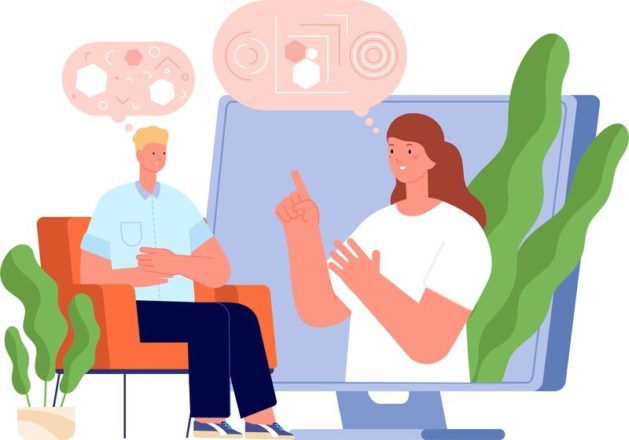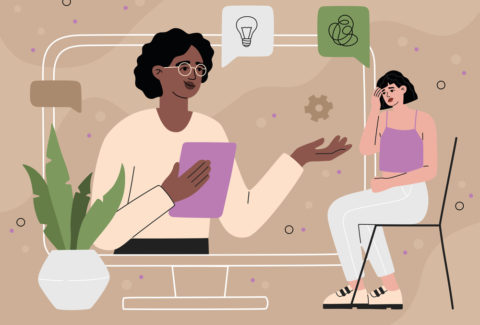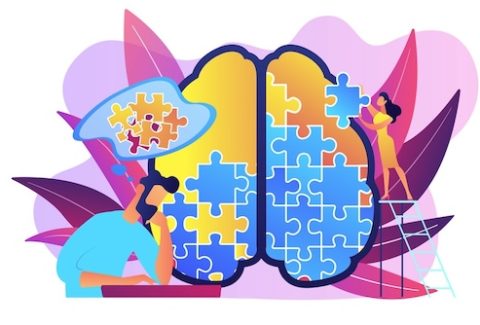The Transformative Potential of the Virtual Empty Chair Technique

The Transformative Potential of the Virtual Empty Chair Technique
Introduction:
In the realm of psychotherapy, the empty chair technique has long been celebrated for its ability to externalize internal conflicts, unresolved emotions, and unmet needs. Rooted in Gestalt therapy, this powerful technique invites individuals to engage in an internal dialogue with different aspects of themselves or significant others by physically embodying these perspectives through role-playing.[1] With the rise of teletherapy and virtual platforms, therapists have adapted the empty chair technique to the digital realm, unlocking new possibilities for introspection, healing, and transformation. In this article, we explore the virtual empty chair technique and its potential to bridge the gap between clients and therapists, foster emotional expression, and catalyze profound change.[2]
Embracing the Digital Frontier:
As teletherapy becomes increasingly prevalent, therapists are tasked with finding innovative ways to facilitate meaningful therapeutic interventions in the virtual space.[3] The virtual empty chair technique offers a creative solution, allowing therapists and clients to engage in experiential work remotely while maintaining a sense of connection and presence. Through video conferencing platforms, clients are invited to imagine the presence of an empty chair in their physical space, symbolizing the presence of a significant other, an aspect of themselves, or an unresolved issue. With the guidance of the therapist, clients engage in an internal dialogue, expressing their thoughts, emotions, and desires as if addressing the imaginary figure seated in the empty chair.[4]
Creating Symbolic Space:
Despite the physical distance inherent in teletherapy, the virtual empty chair technique creates a symbolic space for emotional expression, exploration, and resolution. Through the use of imagination and visualization, clients are able to externalize their internal experiences and engage in a dialogue with different aspects of themselves or their relationships. The virtual empty chair serves as a potent symbol of presence, inviting clients to confront their inner conflicts, confront unresolved emotions, and reclaim their agency in the therapeutic process. By transcending the limitations of physical space, the virtual empty chair technique opens the door to new dimensions of self-awareness, insight, and healing.[5]
Fostering Connection and Empathy:
In addition to facilitating individual introspection, the virtual empty chair technique fosters connection and empathy in the therapeutic relationship. Through the shared experience of role-playing and dialogue, therapists and clients co-create a space of understanding, validation, and support. Therapists demonstrate empathy and attunement as they bear witness to clients’ innermost thoughts and emotions, providing a safe container for vulnerability and exploration. Clients, in turn, experience a sense of validation and validation as they engage in dialogue with the imagined figure in the empty chair, experiencing a profound sense of connection and understanding.[6]
Catalyzing Personal Growth and Transformation:
Ultimately, the virtual empty chair technique holds the potential to catalyze profound personal growth and transformation. By externalizing internal conflicts, confronting unresolved emotions, and engaging in dialogue with different aspects of themselves, clients gain insight into their patterns of thinking, feeling, and behaving.[7] Through this process of introspection and exploration, clients are empowered to make conscious choices, set meaningful goals, and embark on a journey of self-discovery and empowerment. With the support of the therapist and the symbolic presence of the virtual empty chair, clients are equipped to navigate life’s challenges with resilience, authenticity, and grace.
Conclusion:
As we navigate the digital frontier of teletherapy, the virtual empty chair technique emerges as a beacon of possibility and innovation in the realm of psychotherapy. By leveraging the power of imagination, symbolism, and role-playing, therapists and clients alike can engage in meaningful experiential work, fostering connection, empathy, and personal growth. Through the virtual empty chair technique, individuals are invited to confront their innermost fears, embrace their inherent strengths, and step into the fullness of their being. In the ever-evolving landscape of mental health care, the virtual empty chair stands as a testament to the resilience of the human spirit and the transformative potential of the therapeutic relationship.
Interested in exploring Gestalt Therapy further? Find out if our upcoming Gestalt Therapy Virtual Conference, scheduled for May 10, 2024 from 9-1pm (EDT), is the perfect match for you. Click here to discover more.
[1] Kolmannskog, Vikram. The empty chair: Tales from gestalt therapy. Routledge, 2018.
[2] Pugh, Matthew, Tobyn Bell, and Alison Dixon. “Delivering tele-chairwork: A qualitative survey of expert therapists.” Psychotherapy Research 31.7 (2021): 843-858.
[3] Gratzer, David, et al. “Our digital moment: innovations and opportunities in digital mental health care.” The Canadian Journal of Psychiatry 66.1 (2021): 5-8.
[4] Pascual-Leone, Antonio, and Tabarak Baher. “Chairwork in individual psychotherapy: Meta-analyses of intervention effects.” Psychotherapy 60.3 (2023): 370.
[5] Pugh, Matthew, and Tobyn Bell. “Process-based chairwork: applications and innovations in the time of COVID-19.” European Journal of Counselling Theory, Research, and Practice 4 (2020): 1-8.
[6] Arndt, Laura. The effect of empty chair method on future self connection in vivo and in virtual reality. BS thesis. University of Twente, 2020.
[7] Saxon, Morgan A., et al. “Investigating Cues for Perspective-Taking in Virtual Reality.” Journal of Vision 20.11 (2020): 767-767.








